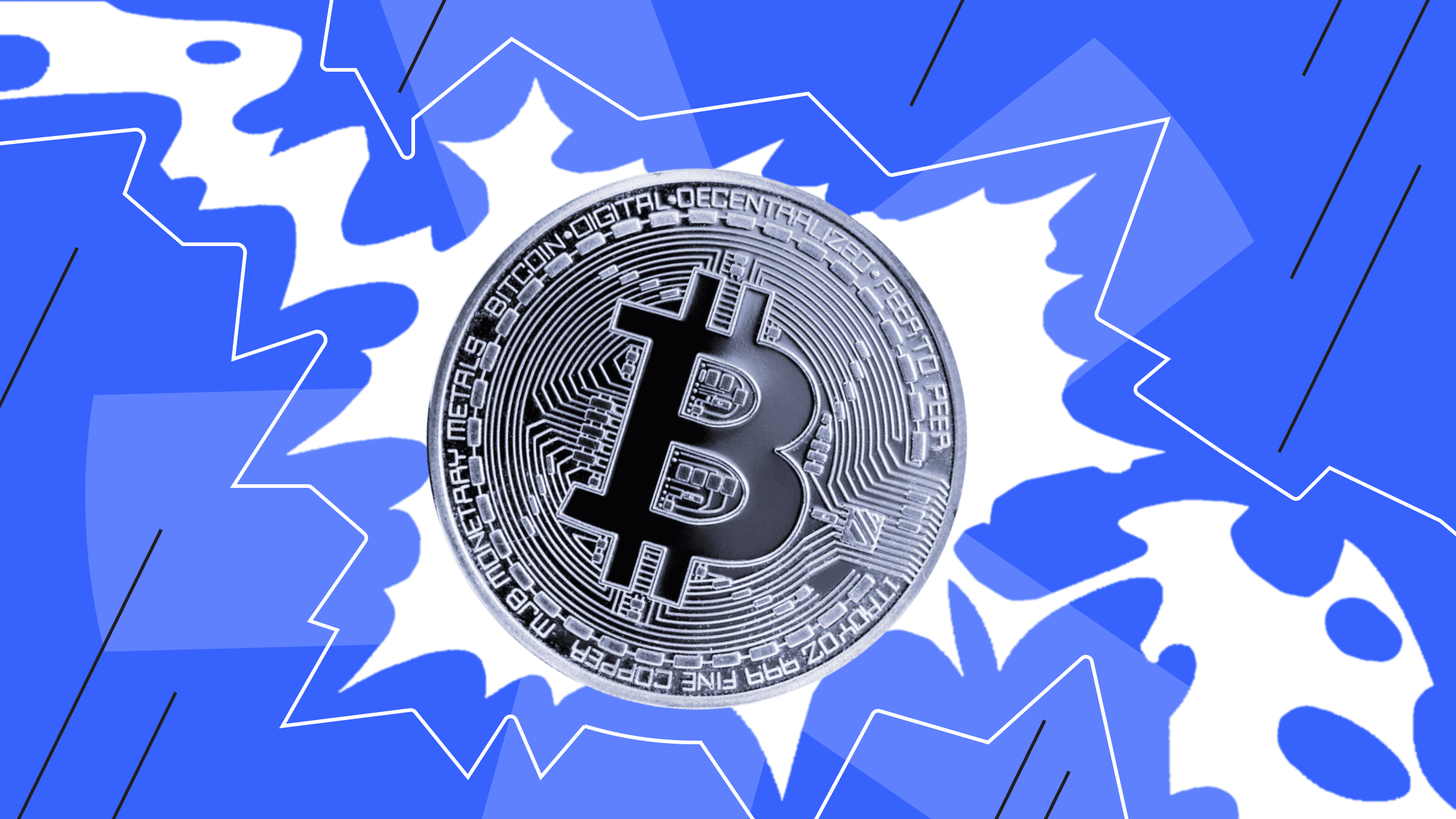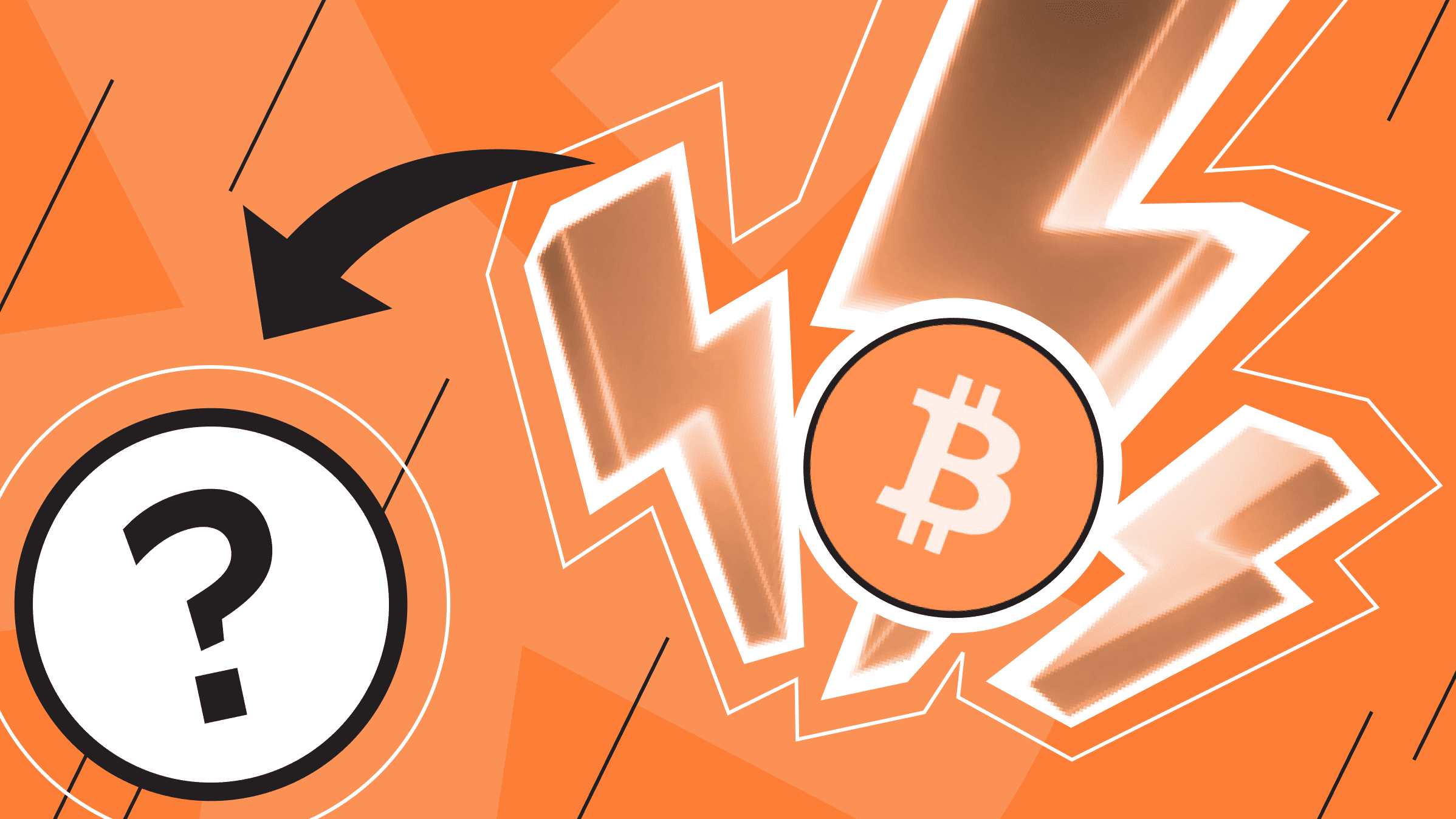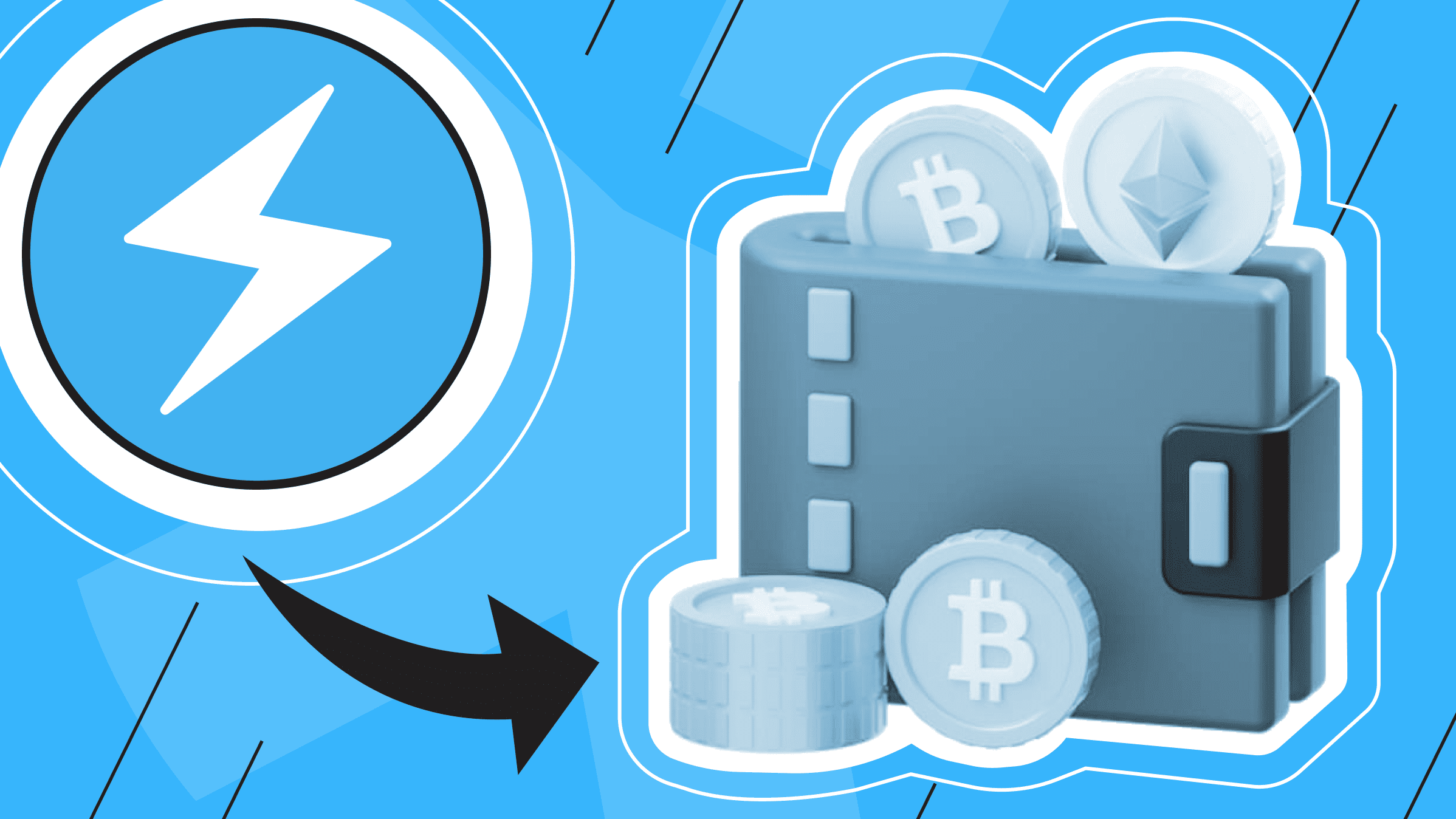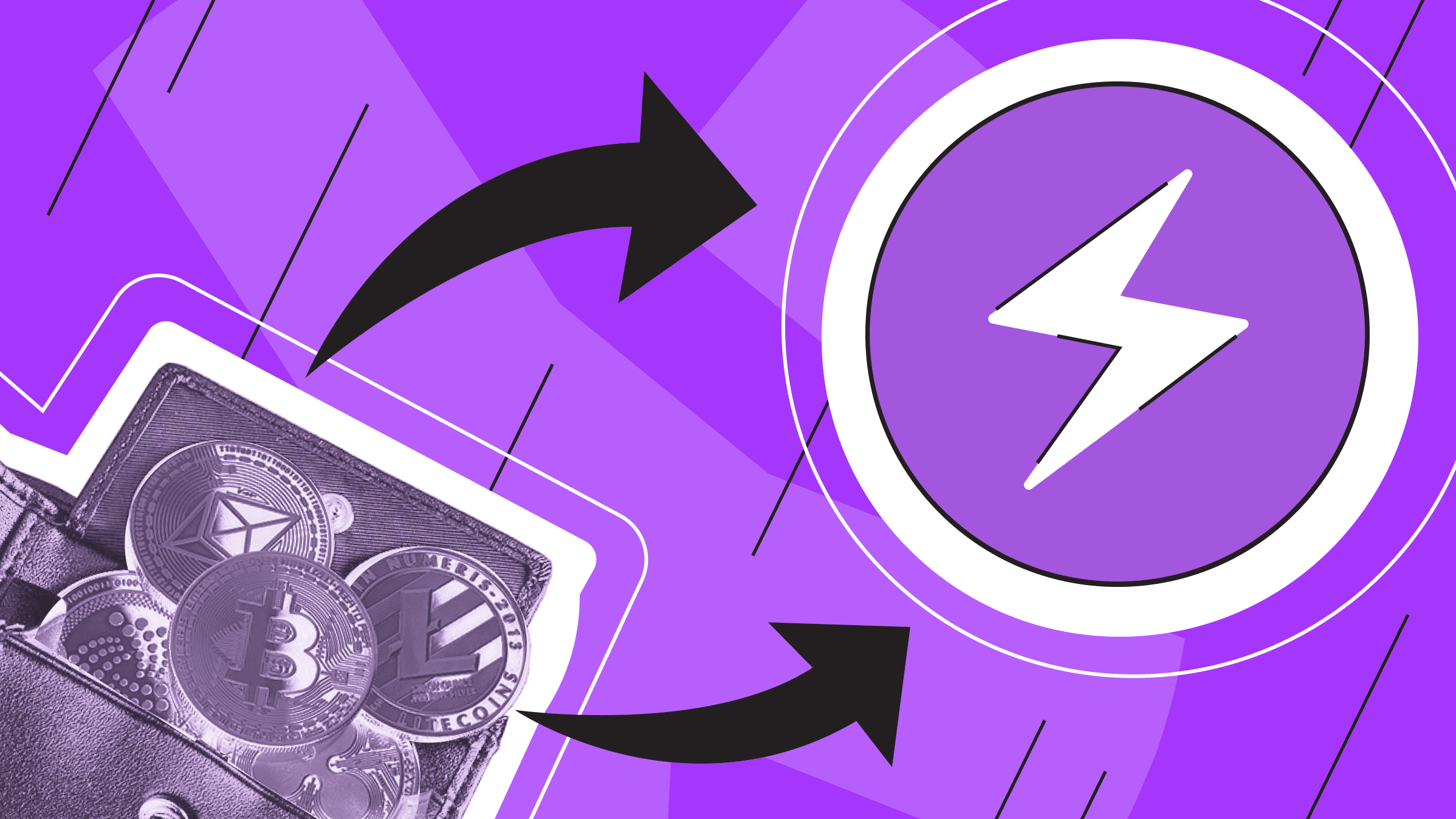
Lightning Network has become the solution to the Bitcoin blockchain scaling problem and is actively growing through integrations with wallets, exchanges, and startups. Why is Lightning Network growing in popularity, and can it make money on the network?
What is the Lightning Network?
The Bitcoin blockchain is built on the principle of blocks, each of which contains a set of transactions, a reference to the previous block, and a unique identifier (hash). Blockchain technology enables the use of a decentralized proof-of-work (PoW) mechanism, which requires significant computing power and energy consumption.
Blockchain faced transaction limitations at some point because each block is limited to 1MB. The scaling problem was solved by developing Lightning Network, a second-layer solution.
Joseph Poon and Thaddeus Dryja described the idea of the Lightning Network in a document titled "Bitcoin Lightning Network: Scalable Off-Chain Instant Payments" in 2015. In 2018, Twitter user hodlonaut began a promotional test of the Lightning Network in game form by sending 100,000 satoshis (0.001 Bitcoin) to a trusted recipient, with each recipient adding 10,000 satoshis to send to the next trusted recipient.
At the time of this writing, the Lightning Network has grown to a size of 16,000+ nodes, 69,000+ channels, and a total liquidity of 5,000+ BTC.
How Does the Lightning Network Work?
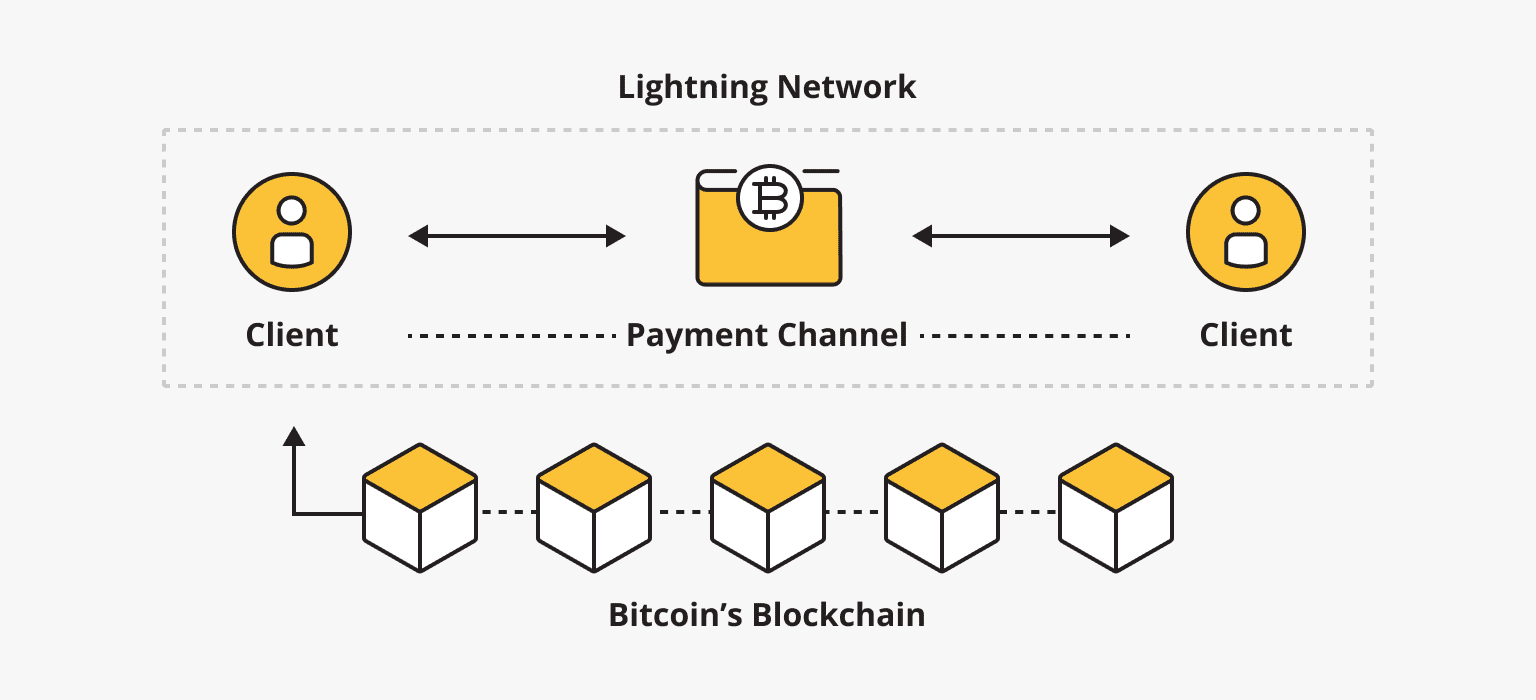
The Lightning Network creates a payment channel between two parties with liquidity, where only the first and last transactions are counted on the Bitcoin blockchain. The Lightning Network uses smart contracts to ensure the security and validity of transactions. This means that participants in the transaction can be sure that the funds will be received and know who the sender and recipient are.
To initiate a payment channel, both parties must commit to transferring a certain amount of Bitcoins (liquidity), which are held and cannot be released while the payment channel remains open. The first transaction, during which liquidity must be established, takes place and is recorded on the blockchain (on-chain). Any transactions between the first and last will already occur off-chain. With no blockchain restrictions and no need to confirm each transaction, all intermediate transactions are much faster. Thus, the blockchain will consider both parties' initial transaction and final balance when the channel closes.
For more details on how the Lightning Network works, read this article.
Lightning Network Benefits
By its nature, Lightning Network offers several advantages:
- Fast payments. Lightning allows transactions to take place outside the blockchain, making them virtually instantaneous.
- No network congestion. The blockchain does not have to expend resources to process every transaction and only considers the first and last transactions.
- Low transaction fees. The average transaction fee is 0.0016 satoshi ($0,00000050), making LN ideal for micropayments.
- Channel and node privacy (onion routing). Details of individual payments are known only to the parties involved (thanks to smart contracts). Each node involved in a transaction only knows the previous and next node along the route.
The Lightning Network has not only found applications on many exchanges but has also been implemented in many cryptocurrency wallets. Zap, Eclair Wallet, BlueWallet, Wallet of Satoshi, and other wallets support the Lightning Network, which literally makes everyday payments fast and convenient.
The LN network also facilitates some transactions to transfer one cryptocurrency to another, thanks to inter-chain atomic swaps first described in 2013 and implemented in 2017 (the exchange between Decred and Litecoin). Lightning does not need to be used in conjunction with atomic swaps, which work with HTLC smart contracts, but transactions between them are much more convenient with LN integration.
Read more about the benefits and use cases of the Lightning Network.
How to Invest in the Lightning Network?
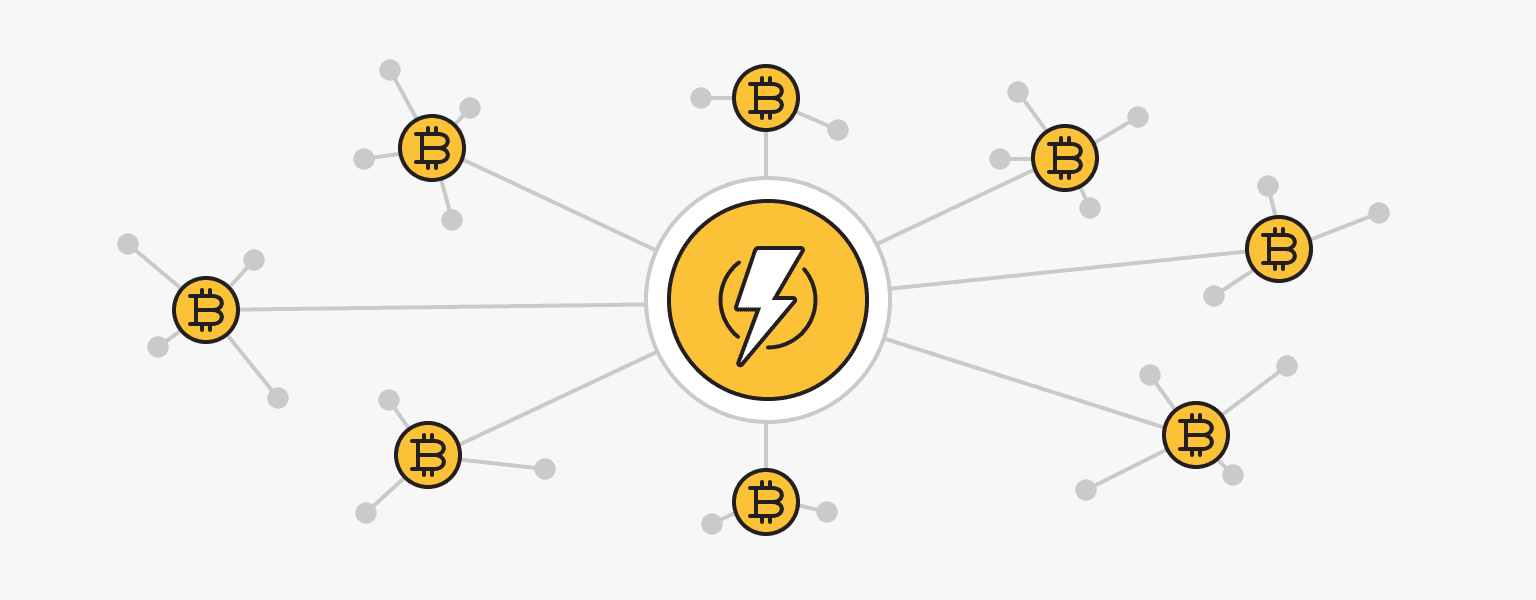
The easiest way to invest in and support the Lightning Network is to buy, store and sell Bitcoin through it. The more people support Bitcoin, the higher the demand for this network will be. After all, if this cryptocurrency were used by a small number of users, there would be no need to scale the blockchain and make transactions easier and faster.
Another way to support the network is to run a node. A full node loads the entire blockchain and helps validate transactions. A lightweight node manually selects the most important data when loading or processing transactions. In this case, you can earn commissions on transactions that go through your node.
To start a lightning node, you need:
- For a full node, 500+ gigabytes of HD storage;
- To be always online;
- Regular backups of node and channel status;
- Sufficient liquidity for channel management.
To run your own node, you will need your own server. The most convenient, reliable, and scalable option is VPS. You can use Bolt Observer, Thunderhub, or Orb platforms for automation to monitor the Lightning node and liquidity.
When evaluating fees, traffic flow, channels to open and close, and rebalancing, you need to look at how traffic is moving and literally make real-time decisions to ensure passive income.
Having a reliable node that has been around for several years can be seen as a deciding factor for future users interested in secure transactions and routes on the network. Including the development of LN, some companies coming to the network may be interested in buying a reliable node, although this is only a guess.
The third way is to invest directly in Lightning Labs, which develops the network. For example, Jack Dorsey has invested in projects that are developing the Lightning Network.
If you are a crypto wallet owner, the best way to increase your user base is to integrate Lightning Network into your application. The same option for developers who want to create their own LN-based software: you can monetize the application by offering paid subscriptions.
Risks of Investing in the Lightning Network

Everyone has long been aware of the risks of owning cryptocurrency and conducting transactions. However, when it comes to the risks of creating your own node, you may face routing fees for transferring payments between channels.
Since nodes must constantly be on the network, the key lock is more vulnerable. However, this problem can be solved with cold storage.
As a node owner, no one will pay you to manage it faithfully, which is also a significant disadvantage. Managing a node, even with automation tools, can be quite time-consuming.
Another problem is attackers. Fraudulent channel closures, exposure of nodes to online theft, and malicious attacks are still on the agenda and can cause significant damage to your node.
The Future of Lightning Network: Is This Technology Worth Investing?
The Lightning Network is considered a relatively new technology that requires refinement in terms of usability for mass adoption, privacy, avoiding unfair channel closures, and others.
To address privacy and security concerns, the Lightning Network can grow significantly through protocol extensions to the underlying blockchain, such as Schnorr Signatures and Taproot. There are also several proposed extensions to the Lightning Network protocol, such as Eltoo, to improve penalty and scaling mechanisms and Channel Factories for more efficient channel handling.
It is worth noting that LN support by many crypto wallets also favors the technology's development. This allows more and more Bitcoin holders to use the network for their own purposes.
Many major players are openly interested in the Lightning network. For example, Binance recently announced its integration with Lightning. This decision was made after Binance users experienced several three-hour withdrawal delays due to network congestion. Integrating the protocol into this world-renowned exchange further promotes the adoption and development of LN.
It was also recently reported that Tiankii, which owns an enterprise platform with access to advanced Bitcoin POS systems, has launched contactless NFC cards on the Lightning Network. The TiankiiCard is positioned as a secure contactless NFC card that allows users to make and receive payments on the Lightning Network using a smartphone or other NFC-enabled device. This non-custodial structure is believed to provide the necessary protection against hackers and help eliminate any losses due to price fluctuations.
Undoubtedly, the Lightning Network will continue to evolve as its integrations and applications grow each year. So will the security and usability requirements that the network must meet. You can also contribute to the technology development if you find this niche attractive for investment.
VPS
Choose the suitable configuration and enjoy all the benefits of a virtual private server.
From $4.99/mo